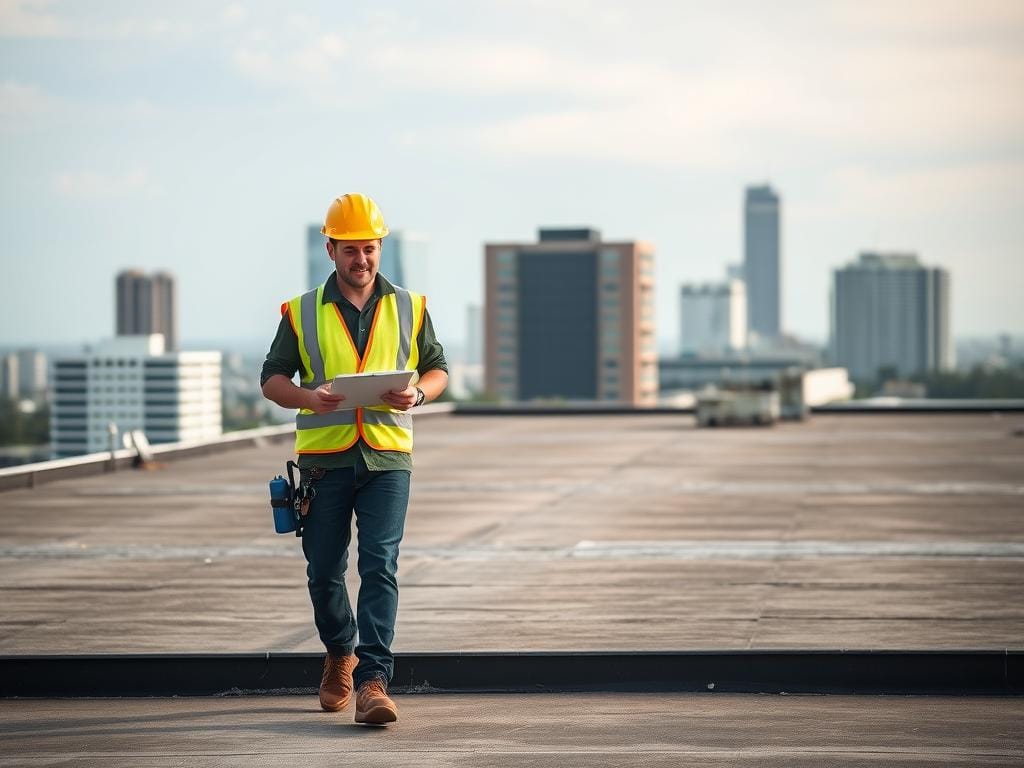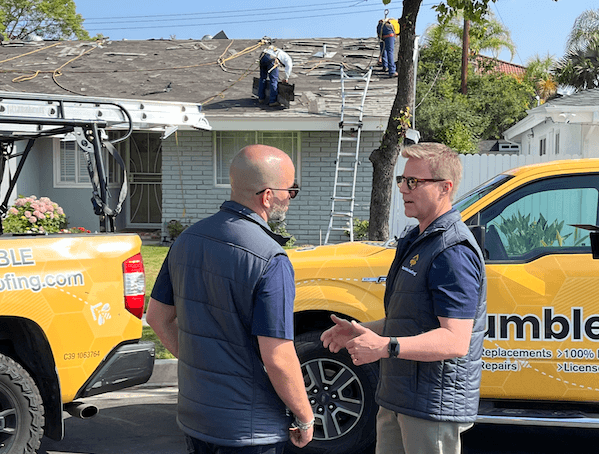Free Roofing Tips & Guides
Got roofing on your mind? Good! Over at Bumble Roofing, we've been busy collecting some awesome articles and genuinely smart tips because we want you to feel totally clued-in when it comes to your roof. Whether it's how to handle routine upkeep like a pro, the secrets to spotting problems when they're small, or just getting the lowdown on what makes a roof last, we've got the info you need. We share all this because, at the end of the day, we want to help you keep a strong, healthy roof over your head, come rain or shine!
Your Guide to Commercial Roof Repair in Los Angeles with Bumble Roofing
Read More
Investing in Your LA Business’s Future: A Guide to Commercial Roof Replacement with Bumble Roofing
Read More
Essential Commercial Roof Maintenance for Los Angeles Properties: A Bumble Roofing Guide
Read More
Free Roofing Estimates in Los Angeles – What to Expect and Why Choose Bumble Roofing
Read More
The Emergency Roof Repair Process
Read More
Why Your SoCal Roof Needs a Regular Roof Tune-Up
Read More
Professional Roof Repair in Los Angeles – Bumble Roofing’s Expert Process
Read More
The Ultimate Guide to Roof Replacement in Los Angeles: Costs, Materials & Hiring Contractors (2025)
Read More
Commercial Roof Repair in Los Angeles: Essential Tips for Business Owners
Read More
Roof Repair in Los Angeles: When to DIY vs. When to Call a Professional
Read More
Comprehensive Roof Inspection Guide for Los Angeles Homeowners
Read More
How to Spot Early Signs of Roof Damage in Los Angeles Homes
Read More
Flat Roofing in Los Angeles: A Comprehensive Guide for Property Owners
Read More
Ultimate Guide to Roof Repair in Los Angeles: Expert Tips and Cost-Effective Solutions
Read More
Bumble Roofing of Los Angeles – Your Trusted Partner for Quality Roofing Services in Los Angeles
Read More
Bumble Roofing’s Expert Guide to Seamless Roof Replacement in Agoura Hills
Read More
How to Repair a Leaking Roof in Los Angeles
Read More
The Ultimate Guide to Finding a Reputable Roofing Contractor in Malibu, CA
Read More
Roof Replacement in Agoura Hills: The Ultimate Guide to a Secure and Stylish Home
Read More
Thousand Oaks Roofing: Local Experts for Repair & Replacement
Read More
Mastering Your Roof in Simi Valley: The Essential Guide to Choosing the Perfect Roofing Contractor
Read More
Your Trusted Partner in Calabasas Roofing Solutions
Read More
Roofing, the Easy Way
At Bumble Roofing, there's No Gimmicks, No Haggling, No Pressure - EVER. Get your estimate today!
Get Estimate























